Last updated on February 14th, 2025 at 11:47 pm
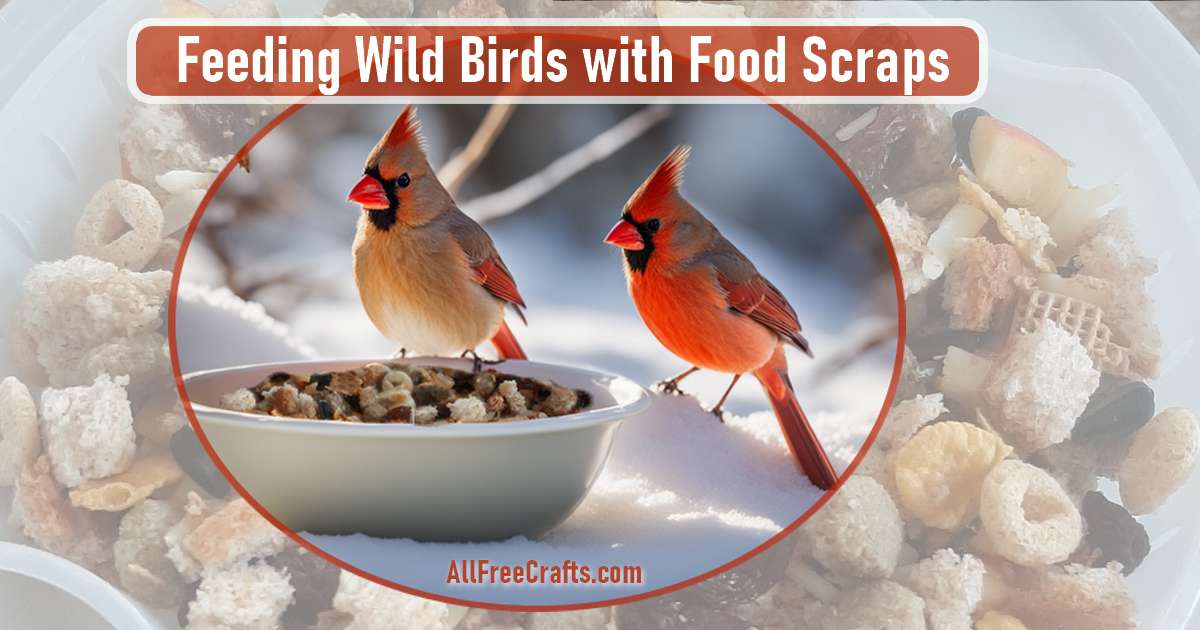
Many household food scraps are welcome additions to the bird feeding table, particularly in winter when natural food sources are hard to find.
Here you’ll find an extensive list of food scraps that you can safely feed to your backyard birds. I’ll start with a ready assortment of food scraps that I recently threw together in a recycled plastic steamer meal insert. The bowl had holes for steam, perfect for draining water and keeping food dry outside. It also fitted inside an old pie pan that I placed in the bottom of a summer flower basket holder on my porch.
The positioning was important for me. My porch is protected from the worst of the snow and I can easily reach it to replenish the food. But, most importantly for hungry birds in winter, you could just throw crumpled bread on the ground to get them through a bitterly cold winter night. Or add an assortment of whatever suitable kitchen food scraps you have to an existing bird feeder.
Do keep in mind that food scraps may attract other animals too. In my area, that includes squirrels, raccoons and, in the nearby woods, coyotes. Fortunately, I have three dogs that deter the coyotes and a cat that loves eating mice and chasing squirrels. But please use commonsense. If putting out food scraps for birds is a lunch invitation for bears in your area, don’t do it!
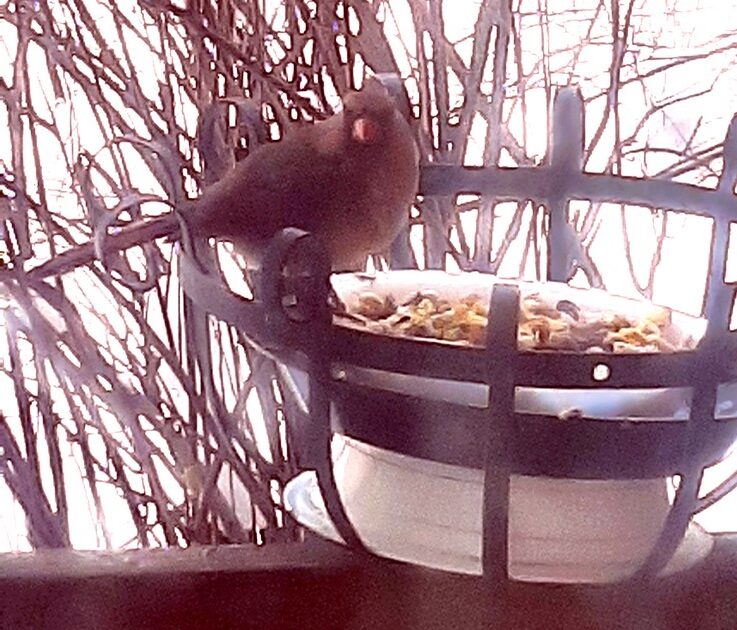
Recycled Steamer Bowl For Bird Food Scraps
Within minutes of filling this recycled bowl with food scraps, I had a female cardinal on board and knew her bright red companion would soon follow.
Juncos, chickadees and nuthatches weren’t far behind.
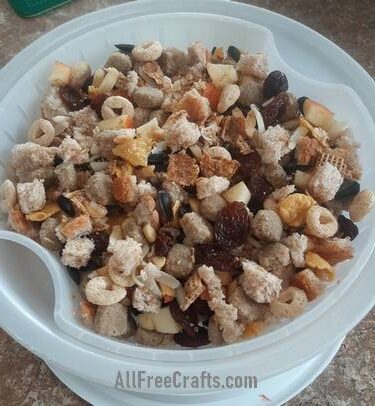
What you see in my recycled bird food bowl is: one slice of whole wheat thin bread, ripped into small pieces; a few raisins and shelled peanuts; some diced apple slices; a drizzle of bacon fat and a small amount of moistened dog kibble from a brand my dogs don’t love.
I also threw in a handful each of black oil sunflower seeds, cornmeal, and dry broken breakfast cereal.
Recommended Food Scraps for Wild Birds
Here’s a great list of food scraps suitable for wild birds:
- Bread and Starches: Bread, preferably whole wheat, is a quick energy source but lacks essential nutrients; feed as a treat, not a staple. Avoid butter or spreads and never feed mouldy bread. Rice, cooked or raw, and chopped up cooked pasta also have a welcomed place on your food scraps bird table.
- Cornmeal: Can be sprinkled on the ground (as a distraction for bossy bluejays) or mixed with other foods. Often used as a filler in homemade bird suet recipes.
- Whole-grain cereals: Choose unsweetened cereals such as oats, shredded wheat or bran flakes. Break up larger pieces of cereal and avoid sugary brands or those with artificial additives.
- Raisins and Dried Fruits: Rich in natural sugars but avoid those with added sugar or preservatives such as sulfur dioxide. Excessive amounts may cause digestive issues. Raisins softened in water are appreciated by fruit-eating birds such as robins and thrushes.
- Apples and Fresh Fruits: Apples, pears, bananas and berries are excellent sources of vitamins and hydration. They are easily eaten when sliced or diced. Remove fruit seeds as some of them, like apple seeds, contain cyanide. Avoid overripe or fermenting fruit which is much more suitable for attracting butterflies. You don’t want to be giving the birds a hangover.
- Vegetables: Raw or cooked vegetables like carrots, peas or spinach are a rich source of vitamins and minerals. Birds often enjoy plain mashed potatoes with no butter or salt. A baked potato, cut in half and broken up a bit with a fork, will keep hungry birds busy and fill their bellies on a cold winter day. Avoid onions, garlic, and avocado, which are toxic to birds. Cooked vegetables should be served plain and unseasoned.
- Nuts: Chopped nut kernals (peanuts, hazelnuts, walnuts, pecans etc.) are popular with many birds, being high in both protein and fats. Chopped nuts appeal to most birds, but woodpeckers and nuthatches will also open nuts with shells.
- Dog Kibble: High in protein and fat, which is essential for many birds, especially in winter. Soften by soaking in water before using. Avoid brands with added salts or artificial flavors.
- Sugar: There is a definite place for sugar in sustaining wild birds. In summer, make your own hummingbird food from sugar and water and create your own recycled hummingbird feeder as well. Orioles also welcome sugar and water nectar, as do many butterflies.
- Meats: Lean, unseasoned meat is a good source of protein for omnivorous species such as woodpeckers. Avoid salted, seasoned or processed meats such as hot dogs, bacon or sausage. A pork chop bone, for instance, will be picked clean by hungry birds. Backyard birds devour small portions of leftover cooked ground beef. It won’t be “leftover” for long. Canned dog or cat food that your pet hasn’t finished can also go on your bird feeder. However, please remember that meat, especially spoiled meat, is prone to attract predators. Make sure you clean a bird feeder offering meat every day. Only you can decide if including meat on the bird feeder is a good idea in your area.
- Fats: Chunks of stale, hardened cheese make a great source of protein for birds. Crumble or grate and add stale cheese to a bird feeder or suet recipe. Unsweetened coconut is also high in fat and enjoyed by many birds. Make a coconut feeder by cutting a coconut in half or following my directions to make a coconut feeder with a roof. Meat fat, drained from oven-cooked meat or ground beef then put in the fridge to solidify, makes a cheap winter alternative to commercial suet blocks but melts away on warmer days. It can be readily mixed in a shallow bowl with bread crumbs, cornmeal, seeds, chopped nuts, cheese, or whatever you have available, then put in the fridge to set. Hang the block in a DIY wooden suet feeder, mesh onion bag, or a homemade suet log.
General Bird Feeding Tips
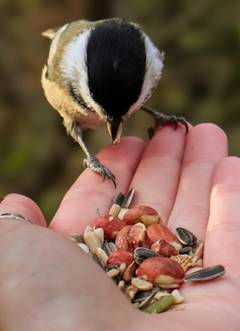
- Whenever possible, provide clean water alongside food scraps.
- Avoid overfeeding or leaving food scraps that spoil and attract pests.
- Monitor the birds visiting your feeder to ensure the food offered is suitable for their diet.
- Place bird feeders away from dense foliage or places where cats can hide. Your own cat can wear a bell to warn birds away while the cat is around.
- Do not feed birds any food that is rotting, rancid, spoiled or mouldy.
- Clean bird feeders regularly to remove bird waste and any leftover food scraps.
- If you regularly feed wild birds, they gradually become used to you providing tasty treats. Eventually, if your practice stillness and patience, as I found out, some of them will come for food from your hand.
Related Posts:
Resources:
These are the books that taught me how to feed kitchen food scraps to the birds. Over the years, I’ve found the information invaluable and my backyard birds, and me, owe a collective tweet of thanks to the authors. Not only did this information cut down on my own food waste, it fed hungry birds as well.
AllFreeCrafts is reader supported! Many supplies are found at thrift stores so try that first! However, if you buy from an affiliate link on this site, I earn a commission at no extra cost to you. As an Amazon associate, I earn from qualifying purchases. This has kept AllFreeCrafts.com online since 2002. Thank you!
Feeding Wild Birds in Winter (Amazon – out of print), Copyright ©1981 by Clive Dobson, Firefly Books
National Audubon Society North American Birdfeeder Handbook (Amazon), Copyright © 1992 Dorling Kindersley Limited, London. Text Copyright ©1992 Robert Burton
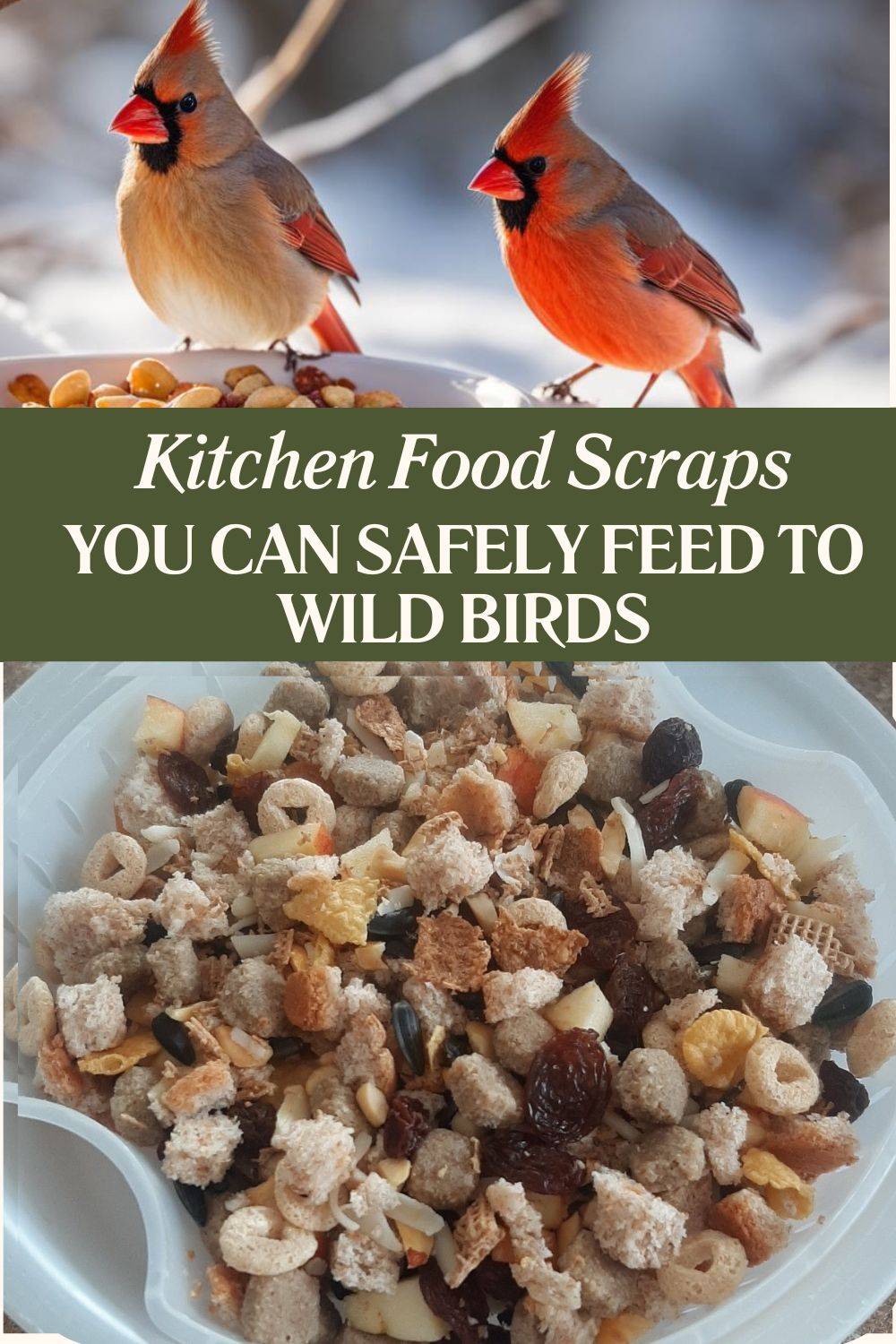
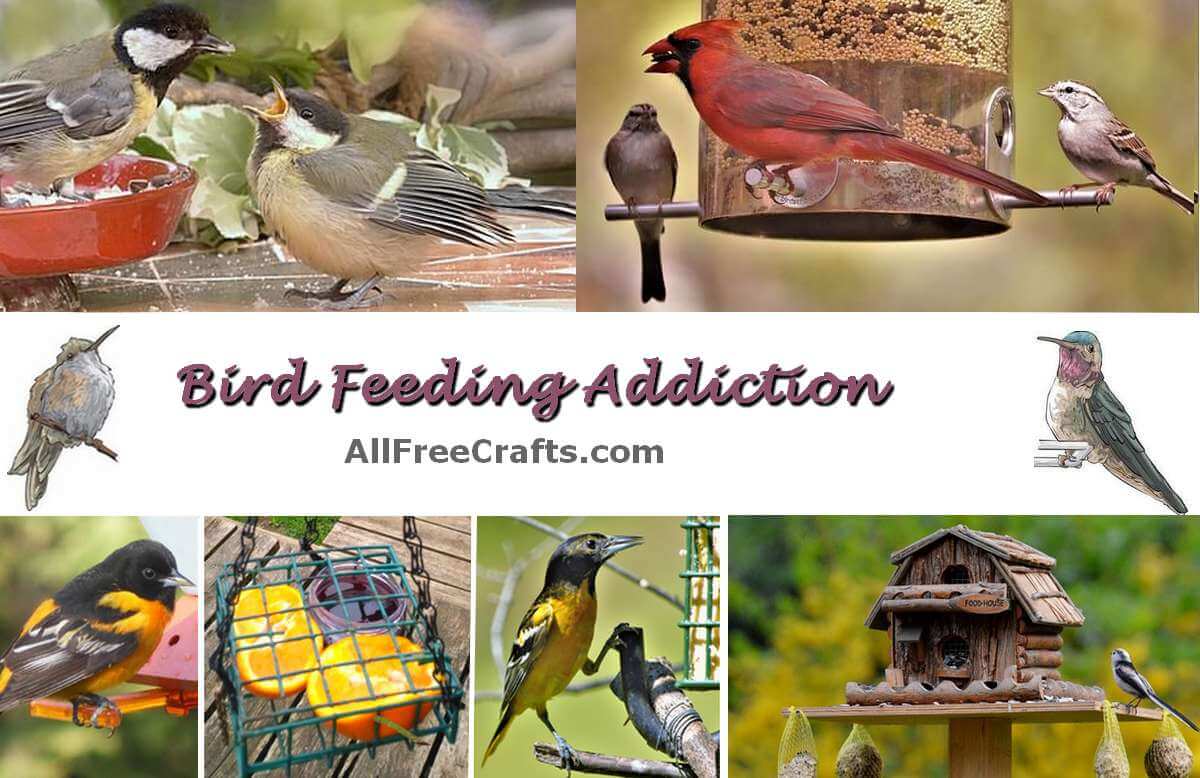
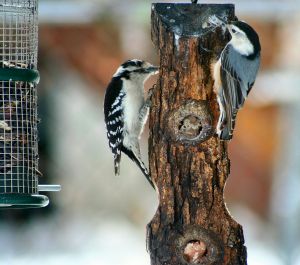
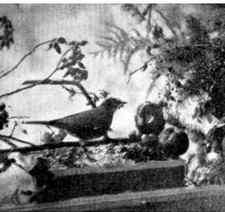

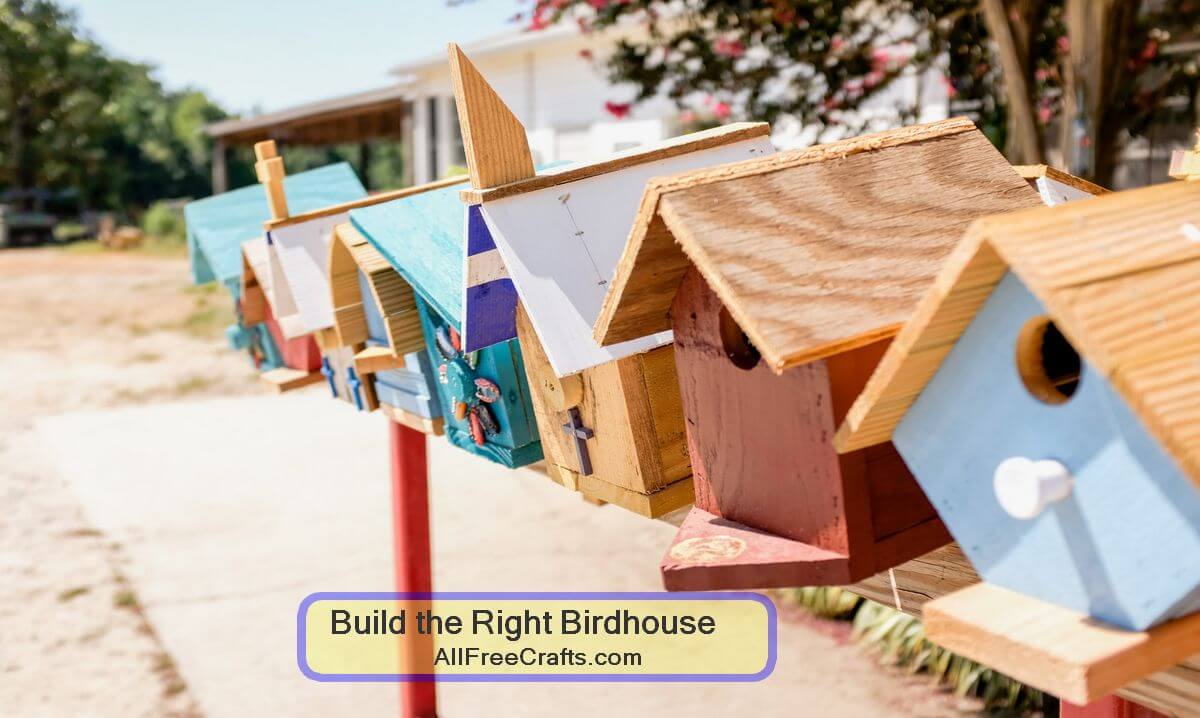
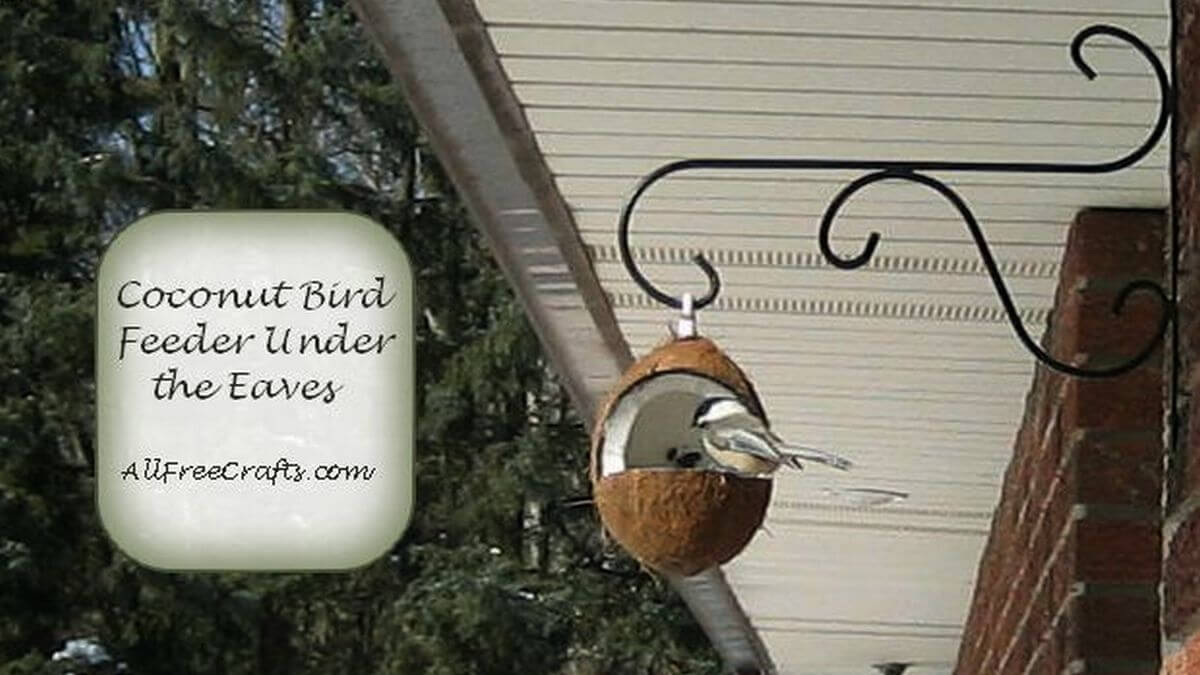
Leave a Reply